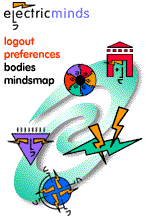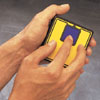
|

|
Now that information is king of the economy and intellectual property presides as his comely queen, loyal subjects are clamoring for trademarks. But Europe's Office for Harmonisation in the Internal Market (OHIM) will tell you that the devil is in the details. The Office for Harmonisation is in charge of registering Europe's trademarks. It has been inundated with more requests than it can handle. The office opened on 1 April 1996 and expected 15,000 applications during its first year. But on opening day, it faced a backlog of 21,000 applications. Estimates are that it will have 40,000 applications by year's end. The office had entered only 4,000 trademarks in its database by the end of summer 1996. OHIM can't even acknowledge receipt of applications it received after April until sometime later this year. OHIM's president claims he needs at least twice his current staff of 150 to begin to deal with the situation. It looks as if European companies will have to depend on national trademark agencies such as Britain's Institute of Trade Mark Agents for a while longer. The whole situation represents an interesting dynamic that I think we'll see repeated as the world grows into an information economy. Branding and trademarks are becoming increasingly important as the value of intellectual property rises. But society is building infrastructure appropriate for an arithmetic rather than a geometric progression of increasing needs. In addition, many companies are objecting to government plans to tax information transmissions and services. Governments are rapidly losing traditional revenue sources while experiencing increasing demands for intellectual property protections and services. In the meantime, it's not all doom and gloom. The US trademark library is now available on the Web, and on CD-ROM from MicroPatent. The database includes all new applications and actively registered trademarks back to 1884, plus any marks that have expired or been abandoned or canceled since 1984. A 10 percent sample of records is available for free access to allow potential subscribers to evaluate the system. The complete database is available at $5 per day, $100 per month, or $995 per year. To sign up, call (800) 648-6787 in the United States or (203) 466-5055 from outside the United States. For more information: Those of us who've developed the habit of gesturing at our computers may soon be able to expect a response although we'll have to learn some new gestures. With the increasing acceptance of touch pads as input devices, a 20-year-old gesture system is receiving attention as a practical alternative to computer keyboards and a host of other input devices. Datotech Systems, Inc.'s Gesture Interface technology is based on a series of patents held by Seth McCloud, who developed the tapping/gesture system for his mute wife. He had a prototype of the system complete in 1982, but the industry just wasn't ready for it. The system depends on a touch pad segmented into nine areas, all reachable by the index finger without moving the hand. The nine areas each execute a different command when tapped by the index finger. Tapping the thumb along with the index finger provides another nine possible commands. Tapping the middle finger along with the index finger provides another nine possibilities, and typing all three fingers provides yet another nine possible commands. (Some of the patents for the technology deal with "vectors" involved in recognizing the distance between thumb, index finger, and middle finger.) These 36 possible combinations were sufficient for McCloud to identify the 36 phonemes that characterize human speech. Double-tapping, and tapping the thumb and middle finger while the index finger presses the appropriate keypad segment, expand the possible combinations to a total of 324 combinations enough to encode the commands for an operating system. Datotech is working with Microcraft (a Bellevue, Washington, company) to map the 324 operations onto the commands for Windows 95. They are also developing a general-purpose application programmer interface that will let manufacturers map any set of operations to control anything from home appliances to industrial machinery. Datotech claims the interface takes less than ten hours to master, and has "proved" it by training kids to use the interface. (A more appropriate proof might have involved good ol' obstinate adults, set in their ways and a little less pliable when it comes to learning new interfaces.) People who have trouble remembering function key operations are going to have a helluva time with this one. Proponents say, however, that the process quickly becomes as automatic as the finger motions currently associated with typing. Another obvious problem will be if too many manufacturers come up with different coding systems or if a person has to know one system for his or her home appliances and a different one for equipment at work. For more information: Weave a massive number of polypropylene monofilaments into a sheet featuring a wafflelike grid of mildly pyramidal bumps and you've got an ideal material for curbing erosion, stabilizing embankments, and capping landfills. You've also got a pretty cool-looking 3D textile that must be good for a few other imaginative applications. High-performance biotechnical composites, or geotextiles as they're called in the trade, are pads constructed of polypropylene monofilaments that provide a porous structure to serve as "rebar for root systems." The pads serve as stabilizing structures for top layers of soil, and enhance the soilholding effects of root systems. The cost varies depending on how much you buy (covering a landfill can turn into a pretty tall order), but $10 a square yard is a ballpark figure. Synthetic Industries of Georgia is a leader in geotextile technologies, and Pyramat is the trade name for the material described above. The company will send you free information about its products if you call 800-FIX-SOIL. Other applications that come immediately to mind involve providing structures for aquatic life forms that require fixed structures upon which to grow and frames or scaffolding for root systems. Suspended in water or other solutions, geotextiles could provide a fine mesh for organisms to cling to while feeding on high-nutrient solutions passing through the colony. The geotextile might even simplify the harvest process by allowing the mature plants or organisms to be removed en masse. Any other ideas or suggestions? Start a topic in the Tech Scan conference. For more information: Activated carbon fibers filter contaminants from air and water ten times better than carbon granules. But they cost a hundred times as much, at $100 per pound. Christian L. Mangun and James Economy of the University of Illinois at Urbana-Champaign have developed a process that allows the creation of carbon-fiber filters that cost only a little more than carbon granule filters. Instead of transforming plastic fibers to pure, porous carbon strands, the new process coats much cheaper glass fibers with plastic resin. A heat process then activates the resin carbon, creating a filtering capability equivalent to that of pure carbon filters. Researchers or producers can treat the fibers with different compounds in order to improve their ability to filter specific chemicals or pollutants. (For example: pores treated with an acidic compound remove ammonia gas; pores lined with a basic compound filter out hydrochloric acid.) The fibers lend themselves well to the creation of fabrics, which are much more convenient than filters depending on carbon granules. The researchers expect to find a wide variety of applications for the fibers such as face masks to protect city dwellers from pollution. The research group has already filed for a patent on the process, and other companies have expressed an interest in applications including air filtration systems for cars, home water purification devices, and industrial waste filtration equipment. For more information: |
needtoknow said: Some companies are experimenting with combining changing price lists with corporate email showing customer/prospect requests. They could also be combined with projects up for bid from publications like Commerce Business Daily (for government projects) and onsale.com and other Web-based transactional services. Most Active Topics: Topic 1 Conference Business Topic 3 Conference Introductions Topic 23 Pliny Fisk's Resource Tracking DB | |||||
| ||||||
Also in Tech Scan: Learning and Cognition Chemistry Lab on a Microchip DNA Arrays | ||||||


